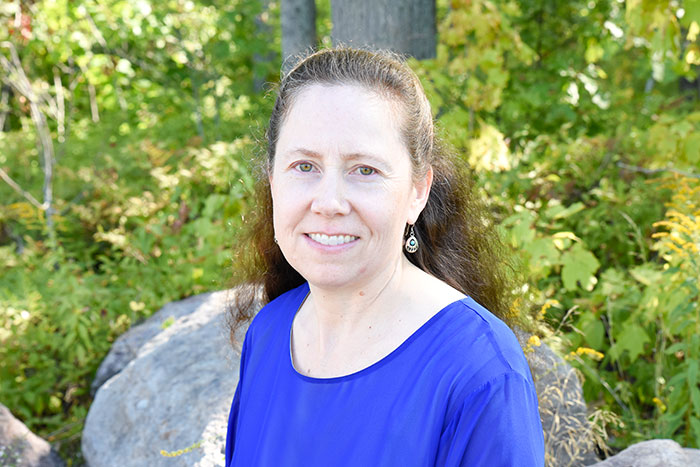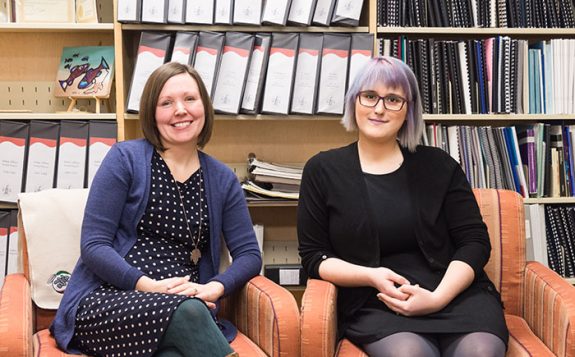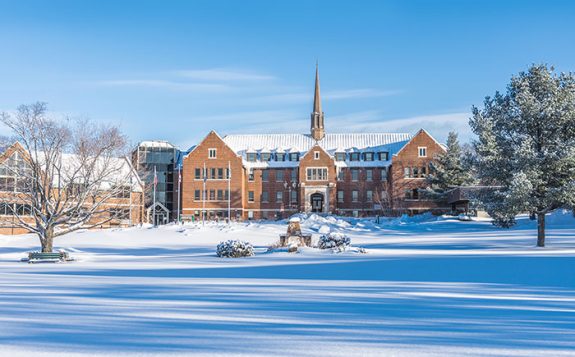Since 2008, Dr. Nairne Cameron, Associate Professor in the Department of Geology and Geography at Algoma University, has been an important voice in Sault Ste. Marie for food security. Her research has helped raise awareness about the various problems facing the Northern Ontario community in regards to food access.
From outside of Ottawa, Cameron was first exposed to the studies of geography and geology at an early age through family ties. Her father was a research scientist and geologist and her grandfather was a prospector who passed through the Algoma region. She attended Queen’s University for her Bachelor of Science in Geology and had the opportunity to work in remote areas, including the Northwest Territories and Labrador, conducting mineral exploration and regional and geological mapping. After graduating, she attended the University of Ottawa to earn both her graduate degrees in geography.
Her sudden change in interest from geology to geography came from living on the outskirts of a large urban centre and witnessing urban sprawl affecting surrounding rural farming. “I was really interested in urban and rural development because we lived on the outside of a city,” she says in her office on the third floor of the Essar Convergence Centre. “The city kept moving out but we had a lot of farms nearby. So I understood the farming situation but also the urban context. So I got into urban and rural development and transportation development and that’s what I moved into for my Master’s and then for my PhD.”
Following the successful completion of her doctoral degree, Cameron completed a post-doctoral fellowship at the University of Alberta. Her interests again changed. “My interests became explicitly around food access and food security. I’ve pretty much continued in that up until now.” The research she conducted, which she regards as being highly rewarding, involved working closely with Highlands community in Edmonton whose grocery store was closed 15 years before and determining the effects that closure had on the community. Cameron’s report was presented to Edmonton’s city council and was used to determine next steps by decision makers and was also widely referenced in Edmonton newspapers.
Now based in Sault Ste. Marie at Algoma U, Cameron is continuing this important work. In 2011, Cameron completed food mapping research on “food deserts”, which examined how food is distributed throughout the city, how people access food, and income levels. Then, in conjunction with the NORDIK (Northern Ontario Research, Development, Ideas and Knowledge) Institute and the AFN (Algoma Food Network), Cameron researched the opportunities and barriers to sourcing local (Algoma District) food. A public outreach map was produced from the study showing Sault Ste. Marie retailers who sold local food, and now an AFN directory incorporates information on retailers. Also, a forthcoming publication documents the research findings. “We have a lot of things in development here in the Sault, and while some of the things need to be coordinated more, I do think we’re making great strides in the right direction.”
More recently, she and two research assistants, Daryl Nelligan and Carter Vance, presented new research from a SSHRC funded project at the Canadian Association of Geographers in Halifax, Nova Scotia which explored the earlier findings further. While focusing on the lived experiences of individuals in Sault Ste. Marie, their research demonstrated how transportation amongst other issues has affected food access and distribution in the city. Plus, a governmental shift has occurred placing greater focus on affordable housing over food access, forcing social service agencies to provide clients with food skills without increasing budgetary spending.
In the future, Cameron is hoping to develop an application for mobile devices which readily identifies food sources within communities. “It’s still very preliminary, but I think it’s important to have this information readily available. A mobile application would provide people with information that is current, in real time, and informative. They can make better decisions and know all of their options in regards to food in the local context.”
With discussions of food at the forefront of her research, Cameron is not your typical geographer. While she does still work with maps and geographic information systems, and teaches courses on the latter, she encourages students to explore the field of geography due to its broad spectrum. “Physical geography used to be very prominent. We’ve conquered a lot of the physical challenges. Now the challenges in many ways are the human element, for example, the environmental problems. It’s important to look at the physical problems, but you really have to look at the human in relation to the physical,” she pauses. “A lot of people when they hear geography automatically think of maps and such. This isn’t the case. There are many avenues of the subject, and many other fields interact and relate with geography. It’s really useful to study from a geographical and place-based perspective because you’re looking at items from so many different lenses and perspectives, including an economic, cultural, social, and scientific perspective. Your options with geography are endless.”
Share Article




